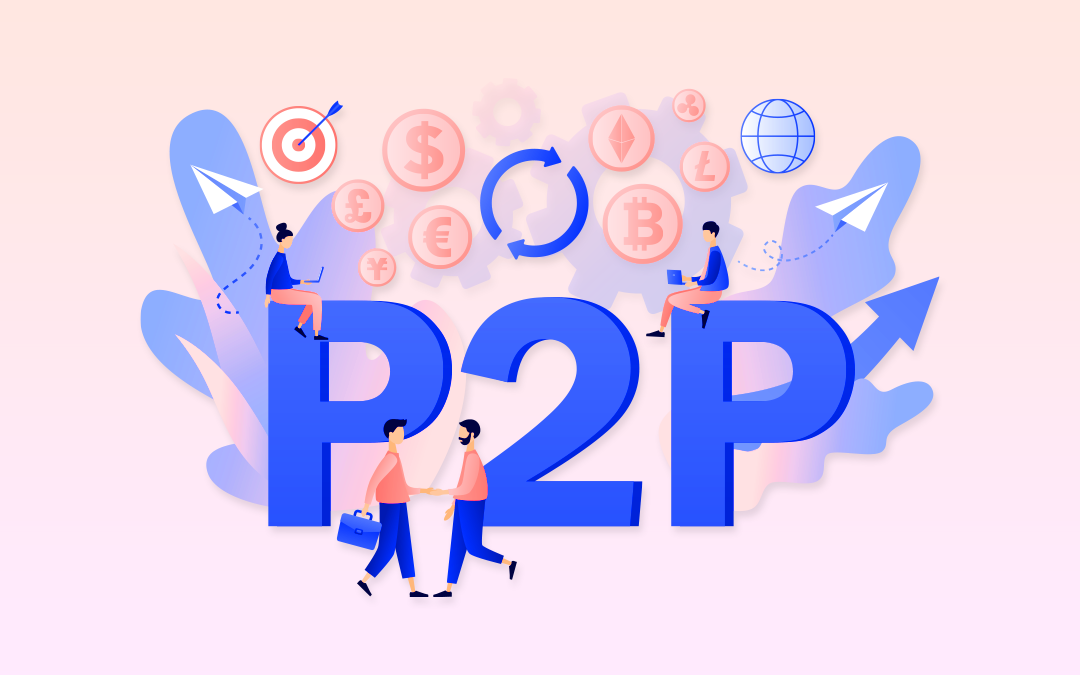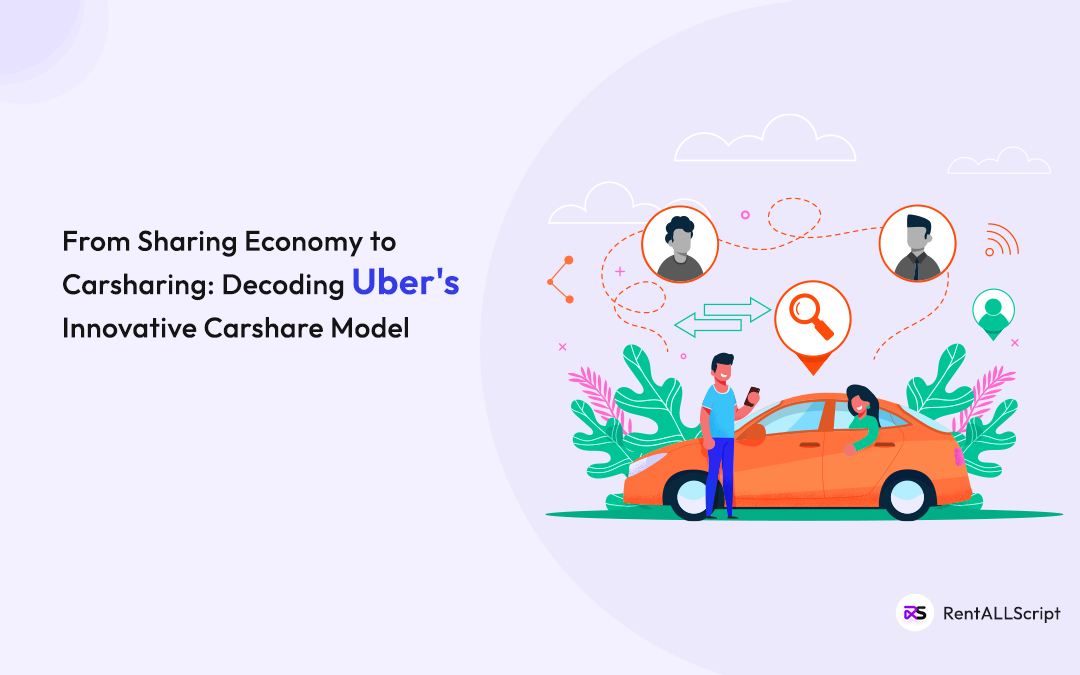
What is Peer-to-Peer (P2P) Business Model? With Examples
A Peer-to-Peer (P2P) business model is a decentralized approach where individuals interact with each other directly with the help of the platform.
A Small Intro to Peer-to-Peer
Peer-to-Peer is a network that allows individuals to communicate and share files using a computer or other devices.
Although it was a decentralized network, there is no need for any central authority to manage it.
Then what exactly can be done through this network 🤔
The individual can share the data file with others, besides, the benefits are its fast performance and better speed.
Nowadays, most businesses rely on the same concepts.
In the following section, we will cover some businesses that rely on the P2P concept.
Let's get to a clear image of Peer-to-Peer!
When did the term Peer-to-Peer get popular?
For many years, the concept of Peer-to-Peer networking has been popular. Yet, if you ask for an exact timeline, it was in the late 1990s and early 2000s.
Since the existence of Napster, which allowed users to share music and other media files. A number of businesses followed the path of the P2P concept.

It has regarded as one of the notable infrastructures of the internet era. As people globally prefer. The platform enables users to communicate and share resources.
Due to it being a decentralized network, users cannot restrict or block other users.
Peer-to-Peer business model 🤔
Yet, you may have familiar with the business model I'm about to discuss.
In a P2P business model, the platform acts as a middleman and connects buyers and sellers, borrowers and lenders.
This includes buying and selling goods and services, sharing skills, lending, and borrowing money.
It's the same for every niche.
The platform connects people to collaborate and assist them with their goals.
In return, they charge them a commission 💲
While the buzz on online platforms continues to grow, people felt more accustomed to this. Moreover, a P2P business model is a more cost-effective and convenient option than a traditional one.
That's why we are discussing them.
Are you looking for a tech partner?
Get 30-min interactive session to discuss your queries, get a product demo, and more!
Top players in the Peer-to-Peer concept [with examples]
Uber [P2P Taxi booking]
Uber is a P2P Taxi booking app that connects the rider and driver to achieve the goal of transportation.
It was founded in 2009 and pioneered the whole taxi booking industry. Unlike traditional taxi services, Uber has completely changed the way of booking a taxi.
Additionally, they have implemented countless safety measures to ensure the well-being of the driver and rider. The measures include in-app safety and background verification for drivers.
Airbnb [P2P vacation rental]
It is a platform that allows people to list and find a place to stay. Airbnb acts as a middleman by assisting travelers and property owners throughout the process.
Founded in 2008 by brian Chesky, Joe Gebbia, and Nathan blecharczyk. They have listed various properties like houses, apartments, and hostel beds on the platform.
Moreover, it is the best alternative to traditional vacation rental platforms.
Convenience and flexibility are the causes that made them stand out from the competition.
TaskRabbit [P2P Handyman service]
It acts as an intermediator and help connects both the Tasker(service provider) and Taskposter(service seeker) to the platform. It was founded in 2008 and acquired by IKEA in 2017.
TaskRabbit offers a home service where users can manage daily chores like carpeting, painting, plumbing, and more.
The Task poster can view the profile of any tasker and book them to do the required task. And the payout process is done safely and securely by the platform.
The business is active in various countries across the United States, and the United Kingdom and is well-known for its flexibility and convenience of its booking.
eBay [P2P e-commerce]
It is an American-based multi-national e-commerce company based in San Jose, California. More importantly, it is a well-known marketplace where consumers can sell or auction off their old goods.
It all started in 1995 by Pierre Omidyar. To look at it now, it turned out to be a multi-billion dollar business with operations in more than 30 countries.
Here, the users both buy and sell goods that include electronics, clothes, and more goes on the list. Besides, the platform offers auction-style listing, fixed-price sales, and classified ads services.
The revenue of eBays is based on the seller-pays model, meaning the seller needs to pay a commission if the products are sold through the platform. The fees vary depending on the total product cost and the seller membership level.
Lending Club [P2P lending platform]
Lending Club is a lending platform that allows individuals to borrow and lend money. It is part of the Peer-to-Peer business model but differs from the traditional banking system in which people borrow money straight from the bank.
Founded in 2006, the Lending club is well-known for being the world's largest and most authorized lending platform.
Their headquarters is in San Francisco, California, and had a presence in the United States and Canada.
Here in this platform, the lender has the authority to set the interest rate while the borrower can filter the lowest interest rate possible.
And this becomes quite annoying for banks and other financial lending companies.
Upwork [P2P Freelance marketplace]
Upwork, formerly known as Elance-oDesk, was founded in 2013 and rebranded in 2015. In March 2022, the company was listed as one of the 100 Most Influential Companies of the year.
It is the platform for freelancers to find work in various fields, including writing, graphic design, web development, and more, while the client can hire numerous professionals on the platform.
Freelancers are getting paid hourly, while the platform charges a small commission for facilitating the transaction.
In addition, the platforms provide various tools and features for communication and collaboration between users, such as in-app chatting, time tracking, and project proposal and sharing.
Well, it's time to say goodbye!
Congratulation that you made out to the end. I hope you understand the concept of the Peer-to-Peer business and how often it gets famous around.
The Peer-to-peer (P2P) concept has disrupted traditional businesses while creating opportunities for entrepreneurs and end-users.
Additionally, if you are looking to develop an app that's around the P2P concept, you can get in touch with us by scheduling a free demo.
Or you can contact us at [email protected]
So then it’s a goodbye 👋
See you all in another blog.






